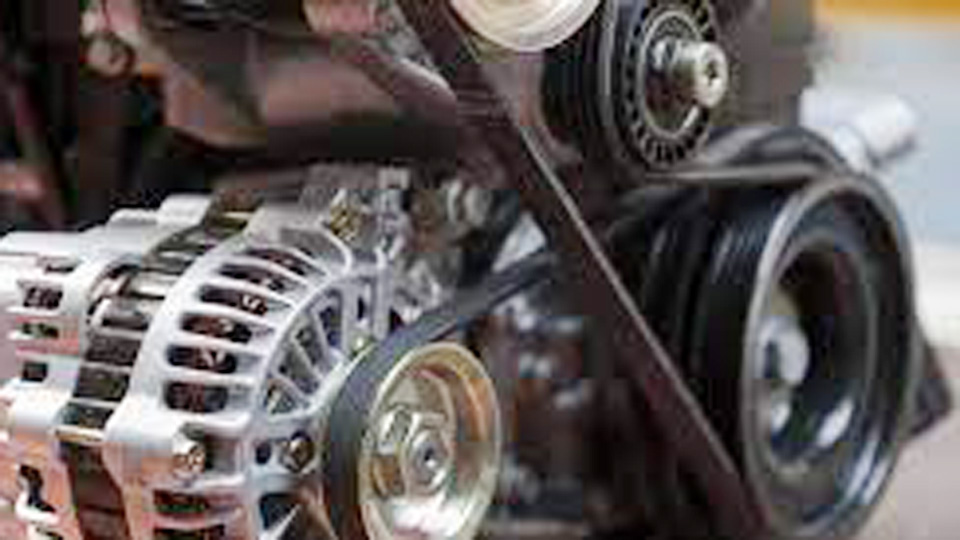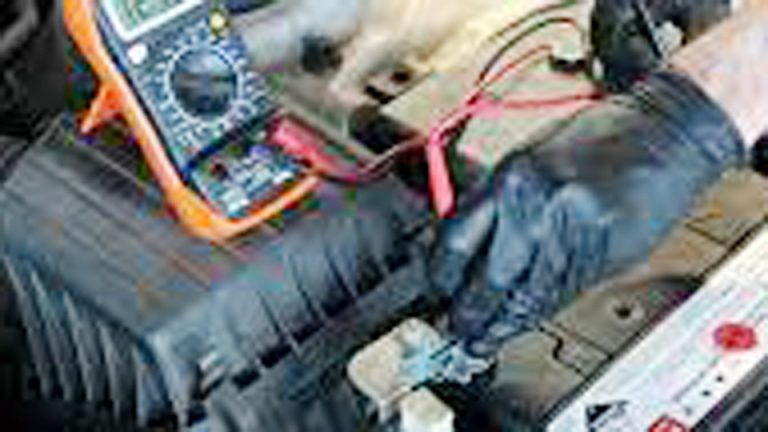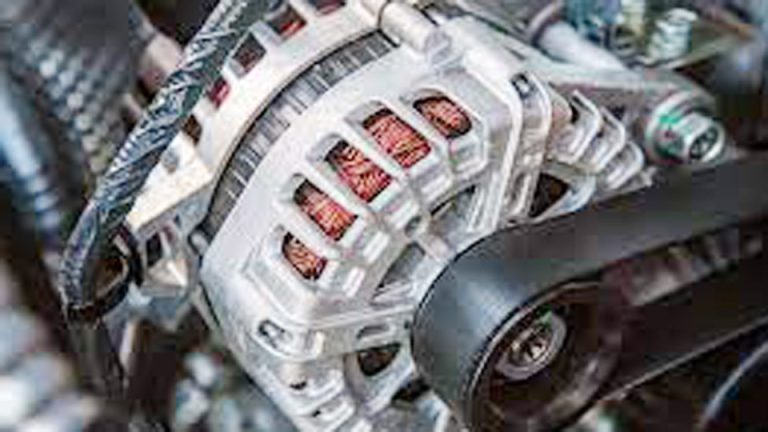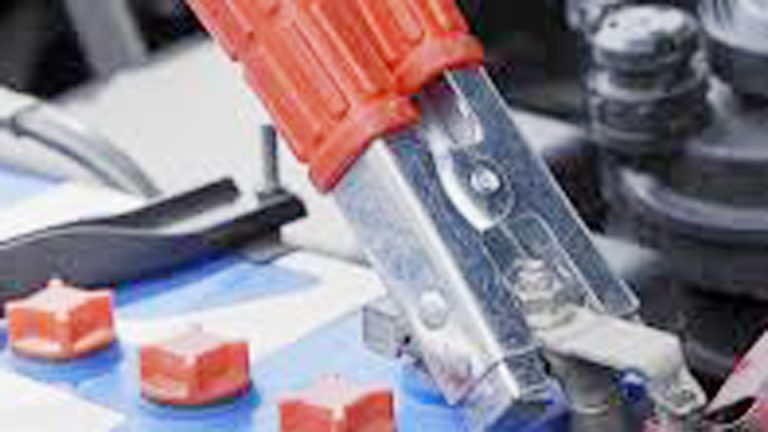I’ve been elbow-deep in engines for over a decade, and one question I hear all the time in the shop is, “Can a starter motor drain a car battery?” The short answer? Yes, it absolutely can. A faulty starter motor can wreak havoc on your battery, leaving you stranded in a parking lot or staring at a no-start situation in your driveway.
But the full story is more complex, and understanding it can save you time, money, and a whole lot of frustration. In this guide, I’ll walk you through everything you need to know about starter motors, how they can drain your battery, and what to do about it—straight from my years of turning wrenches and troubleshooting dead cars.

Image by expresscareautomn
Whether you’re a DIY mechanic, a car enthusiast, or just someone trying to keep their ride reliable, this article will give you practical, hands-on advice. We’ll cover what a starter motor does, why it fails, how to diagnose battery drain, and whether to go with OEM or aftermarket parts. I’ll share some real-world stories from the garage and tips to avoid common pitfalls.
What Is a Starter Motor and Why Does It Matter?
What Does a Starter Motor Do?
The starter motor is the unsung hero of your car’s ignition system. It’s a small electric motor that engages when you turn the key (or push the start button) to crank the engine and get it running. Without it, your car’s engine would just sit there, no matter how much gas is in the tank.
The starter draws power from your car’s battery, spins the flywheel, and sets the combustion process in motion. It’s a critical component for reliability, and when it goes bad, it can cause all sorts of headaches—including draining your battery.
Why It Matters for Safety, Performance, and Cost
A failing starter motor doesn’t just leave you stuck; it can also compromise safety. Imagine being stranded on a dark road because your car won’t start—that’s not just inconvenient, it’s risky. Performance-wise, a sluggish starter can make your engine hard to crank, leading to uneven starts or damage to other components like the flywheel.
And cost? A new starter motor can run anywhere from $100 to $500, depending on your vehicle and whether you choose OEM or aftermarket. Add labor costs, and you’re looking at a hefty bill if you’re not doing the work yourself. Keeping your starter in check is key to avoiding these issues.
Can a Starter Motor Really Drain Your Car Battery?
How a Faulty Starter Motor Causes Battery Drain
Yes, a bad starter motor can drain your car battery, and I’ve seen it happen more times than I can count. The most common culprit is a short circuit or internal failure in the starter’s electrical components. For example, a stuck solenoid—a key part of the starter system—can keep drawing power from the battery even when the car is off. This parasitic draw slowly saps the battery’s charge, leaving it dead in a matter of hours or days.
Another issue is excessive current draw during cranking. If the starter’s bearings or brushes are worn out, it might require more power than normal to turn the engine. This overworks the battery, depleting it faster than the alternator can recharge it. In my shop, I once had a customer with a Dodge Ram who thought his battery was junk because it kept dying overnight. A quick test showed the starter was pulling way too much current—problem solved with a new starter.
Signs Your Starter Motor Is Draining the Battery
Here’s what to look for if you suspect your starter is the culprit:
Slow Cranking or Clicking Sounds: When you turn the key, the engine cranks slowly or you hear a rapid clicking noise. This often means the starter is struggling and pulling too much power.
Battery Dies Overnight: If your battery is fully charged but dead by morning, a parasitic draw from the starter could be to blame.
Dim Lights or Electrical Issues: If your headlights dim significantly when starting the car, the starter might be overtaxing the battery.
Burning Smell or Heat Near the Starter: A failing starter can overheat, causing a noticeable smell or warmth under the hood.
If you notice these signs, don’t just replace the battery—it’s like putting a Band-Aid on a broken leg. Test the starter first.
Diagnosing Battery Drain: A Step-by-Step Guide
Here’s how I diagnose a starter-related battery drain in the shop, and you can do this at home with basic tools:
Check the Battery Voltage: Use a multimeter to measure the battery’s voltage with the car off. A healthy battery should read around 12.6 volts. If it’s below 12.2 volts, charge it fully before proceeding.
Test for Parasitic Draw: Set your multimeter to DC amps, disconnect the negative battery cable, and connect the multimeter between the negative terminal and the cable. A normal draw is under 50 milliamps. Anything higher suggests a problem, possibly the starter.
Inspect the Starter Connections: Check the starter’s wiring and solenoid connections for corrosion or looseness. I’ve fixed plenty of “dead” starters by just cleaning the terminals.
Perform a Starter Draw Test: With the help of a friend, measure the current draw while cranking the engine. Most starters draw 100–200 amps, but a bad one might pull 300+ amps, killing the battery.
Listen and Feel: If you hear grinding or the starter feels hot after cranking, it’s likely failing internally.
Pro Tip: Always disconnect the battery before working on the starter to avoid shocks or short circuits. Safety first!
When and Why Does a Starter Motor Need Replacement?
Common Reasons for Starter Failure
Starter motors don’t last forever—most are good for 100,000 to 150,000 miles, but heavy use, extreme temperatures, or poor maintenance can shorten their lifespan. Here are the main reasons they fail:
- Worn Brushes or Bearings: The internal brushes that conduct electricity wear out, reducing the starter’s efficiency.
- Faulty Solenoid: The solenoid engages the starter gear with the flywheel. If it sticks, it can drain the battery or prevent cranking.
- Overheating: Starters in high-performance vehicles or those used in stop-and-go traffic can overheat, damaging internal components.
- Electrical Shorts: Corrosion or damaged wiring can cause shorts, leading to battery drain.
I once worked on a Ford F-150 where the owner ignored a grinding noise for months. By the time he brought it in, the starter had chewed up the flywheel teeth, doubling the repair cost. Don’t let small issues snowball.
When to Replace Your Starter Motor
Replace your starter if you notice:
- Consistent failure to crank the engine.
- Excessive current draw during testing.
- Physical damage, like cracks or burnt wiring.
- Grinding or whining noises that persist after cleaning connections.
If you’re on a budget, you can sometimes rebuild a starter with new brushes or a solenoid, but for most folks, a full replacement is faster and more reliable.
OEM vs Aftermarket Starter Motors: Which Is Better?
OEM Starter Motors: Pros and Cons
Original Equipment Manufacturer (OEM) starters are made by the same company that built your car’s original parts. For example, a Honda Civic might use a Denso or Mitsuba starter.
Pros:
- Perfect fit and compatibility with your vehicle.
- High-quality materials, often lasting longer than aftermarket options.
- Usually backed by a manufacturer’s warranty (1–2 years).
Cons:
- Expensive—often $200–$500 depending on the vehicle.
- Limited availability for older or less common models.
- Dealership markups can inflate costs.
Aftermarket Starter Motors: Pros and Cons
Aftermarket starters are made by third-party companies like Bosch, ACDelco, or Remy. They’re widely available at places like AutoZone or Advance Auto Parts.
Pros:
- More affordable, typically $100–$300.
- Wide availability for most makes and models.
- Some brands (e.g., Bosch) offer excellent quality and warranties.
Cons:
- Quality varies widely—cheap brands can fail quickly.
- May not fit as precisely as OEM, requiring minor adjustments.
- Risk of counterfeit parts, especially online.
Comparison Table: OEM vs. Aftermarket Starter Motors
| Feature | OEM | Aftermarket |
|---|---|---|
| Price | $200–$500 | $100–$300 |
| Quality | High, consistent | Varies (high-end brands like Bosch are reliable) |
| Fit | Perfect for your vehicle | May require slight modifications |
| Warranty | 1–2 years, sometimes longer | 1 year (premium brands may offer more) |
| Availability | Dealerships, limited for older cars | Widely available at auto parts stores |
| Best For | Newer cars, long-term reliability | Budget-conscious DIYers, older cars |
My Recommendation
For newer vehicles (under 5 years old), I lean toward OEM starters for their reliability and perfect fit. For older cars or budget builds, a high-quality aftermarket starter from a reputable brand like Bosch or ACDelco is usually fine. Always check reviews and warranty details before buying. Last year, I helped a buddy install a Bosch starter on his ’98 Chevy Silverado, and it’s been running like a champ for half the price of an OEM unit.
How to Spot Fake or Low-Quality Starters
Counterfeit parts are a real problem in the US market, especially online. Here’s how to avoid them:
Buy from Reputable Retailers: Stick to AutoZone, Advance Auto Parts, or authorized dealers. Avoid sketchy eBay or Amazon sellers.
Check Packaging: Genuine parts have high-quality packaging with clear branding and part numbers.
Inspect the Part: Look for sloppy welds, poor machining, or missing brand logos. OEM and premium aftermarket parts are well-finished.
Verify Part Numbers: Cross-reference the part number with your vehicle’s manual or a trusted database like RockAuto.
I once had a customer bring in a “bargain” starter from an online marketplace. It failed in two weeks, and the seller had vanished. Stick with trusted sources to save yourself the headache.
How to Replace a Starter Motor: Step-by-Step Guide
Tools You’ll Need
- Socket set (metric and standard, depending on your vehicle).
- Wrenches (10mm–14mm are common).
- Screwdrivers (Phillips and flathead).
- Multimeter for testing.
- Jack and jack stands or ramps.
- Torque wrench for precise bolt tightening.
- Gloves and safety glasses.
Safety First
Always disconnect the battery’s negative terminal before starting work to avoid electrical shocks or shorts. If you’re jacking up the car, use jack stands and never rely on the jack alone. I learned this the hard way early in my career when a car slipped off a shaky jack—luckily, no one was hurt, but it was a wake-up call.
Step-by-Step Replacement
- Locate the Starter: The starter is usually bolted to the engine block or transmission bell housing, near the flywheel. On most cars, it’s accessible from under the hood or by jacking up the front.
- Disconnect the Battery: Remove the negative cable to prevent electrical issues.
- Remove Wiring: Unplug the starter’s electrical connections (usually a positive cable and a solenoid wire). Label them to avoid confusion.
- Unbolt the Starter: Remove the 2–3 bolts securing the starter. They’re often tight, so use a breaker bar if needed.
- Remove the Old Starter: Wiggle it out carefully—it’s heavier than it looks!
- Install the New Starter: Position the new starter, align it with the flywheel, and hand-tighten the bolts. Then torque them to the manufacturer’s specs (check your vehicle’s manual).
- Reconnect Wiring: Attach the electrical connections securely.
- Reconnect the Battery: Hook up the negative cable and test the starter by turning the key.
- Test Drive: Start the car a few times to ensure everything’s working.
Common Mistakes to Avoid
- Not Torquing Bolts Properly: Loose bolts can cause misalignment, damaging the flywheel.
- Mixing Up Wires: Double-check the positive and solenoid connections.
- Skipping the Battery Test: Always test the battery and alternator after replacement to rule out other issues.
- Ignoring Flywheel Damage: Inspect the flywheel teeth for wear while the starter is out. I’ve seen too many DIYers skip this and regret it later.
Maintenance Tips to Extend Starter Life
- Keep Connections Clean: Corrosion on terminals can strain the starter. Clean them annually with a wire brush and apply dielectric grease.
- Avoid Short Trips: Constantly starting and stopping the engine wears the starter faster. Combine errands when possible.
- Check Battery Health: A weak battery forces the starter to work harder. Test it every 6 months.
- Listen for Warning Signs: Address clicking or grinding noises immediately to prevent bigger problems.
Real-World Anecdotes from the Garage
I had a customer roll into the shop with a 2015 Toyota Camry that wouldn’t start. She’d already replaced the battery twice, thinking that was the issue. After a quick parasitic draw test, we found the starter solenoid was stuck, draining the battery overnight. A new OEM starter fixed it, and she was back on the road for under $400. The lesson? Don’t assume a dead battery is always the battery’s fault—test the starter, too.
Another time, a DIYer brought in his Jeep Wrangler after installing a cheap aftermarket starter. It worked for a week, then started grinding. Turns out, the starter’s gear wasn’t properly aligned with the flywheel, and the shoddy build quality didn’t help. We swapped it for a higher-quality Remy unit, and I showed him how to torque the bolts properly. He’s been trouble-free since.
Conclusion
A starter motor that drains your car battery is more than just an annoyance—it’s a sign of a problem that needs immediate attention. By understanding how the starter works, recognizing the signs of failure, and choosing the right replacement part, you can keep your car reliable and avoid costly repairs.
Whether you go OEM for peace of mind or aftermarket to save a few bucks, prioritize quality and compatibility. And if you’re doing the work yourself, take your time, use the right tools, and double-check your connections.
Always keep a multimeter in your toolbox. It’s the easiest way to diagnose battery and starter issues before they leave you stranded. Trust me, it’s saved me more times than I can count.
FAQ: Common Questions About Starter Motors and Battery Drain
Can a bad starter motor cause a car to not start at all?
Yes, a completely failed starter motor won’t crank the engine, leaving your car dead. Test the starter with a multimeter or listen for clicking noises to confirm.
How long does a starter motor typically last?
Most starter motors last 100,000–150,000 miles, but heavy use or extreme conditions can shorten their lifespan. Regular maintenance helps.
Is it worth rebuilding a starter motor instead of replacing it?
Rebuilding can save money ($50–$100 vs. $100–$500 for a new one), but it’s time-consuming and requires skill. For most DIYers, replacement is easier.
Can a bad alternator mimic starter motor issues?
Yes, a failing alternator can’t properly charge the battery, causing slow cranking that mimics a bad starter. Test the alternator’s output (13.5–14.5 volts) to rule it out.
How do I know if I’m buying a genuine starter motor?
Buy from reputable retailers, check for proper branding and part numbers, and inspect the part for quality. Avoid deals that seem too good to be true.



